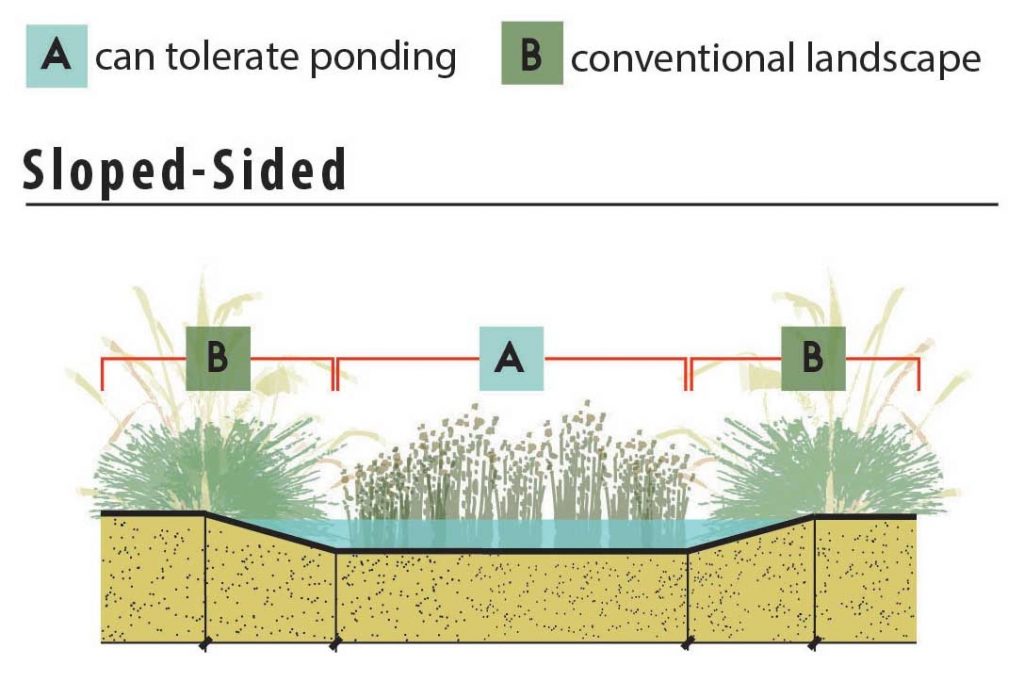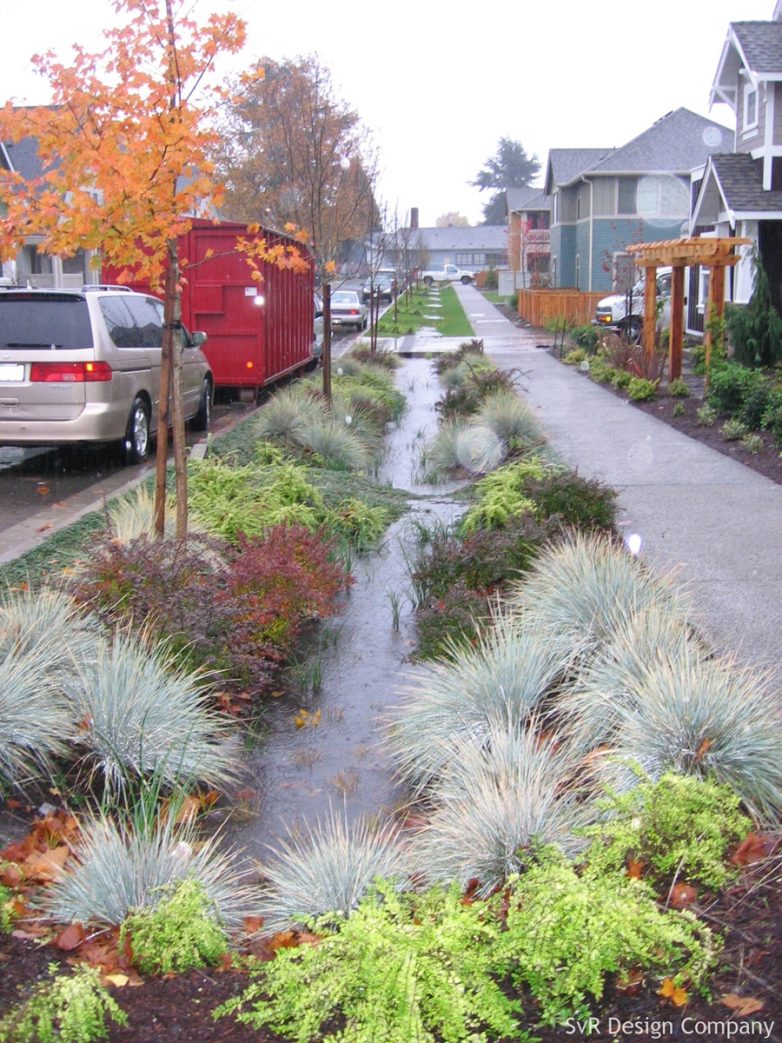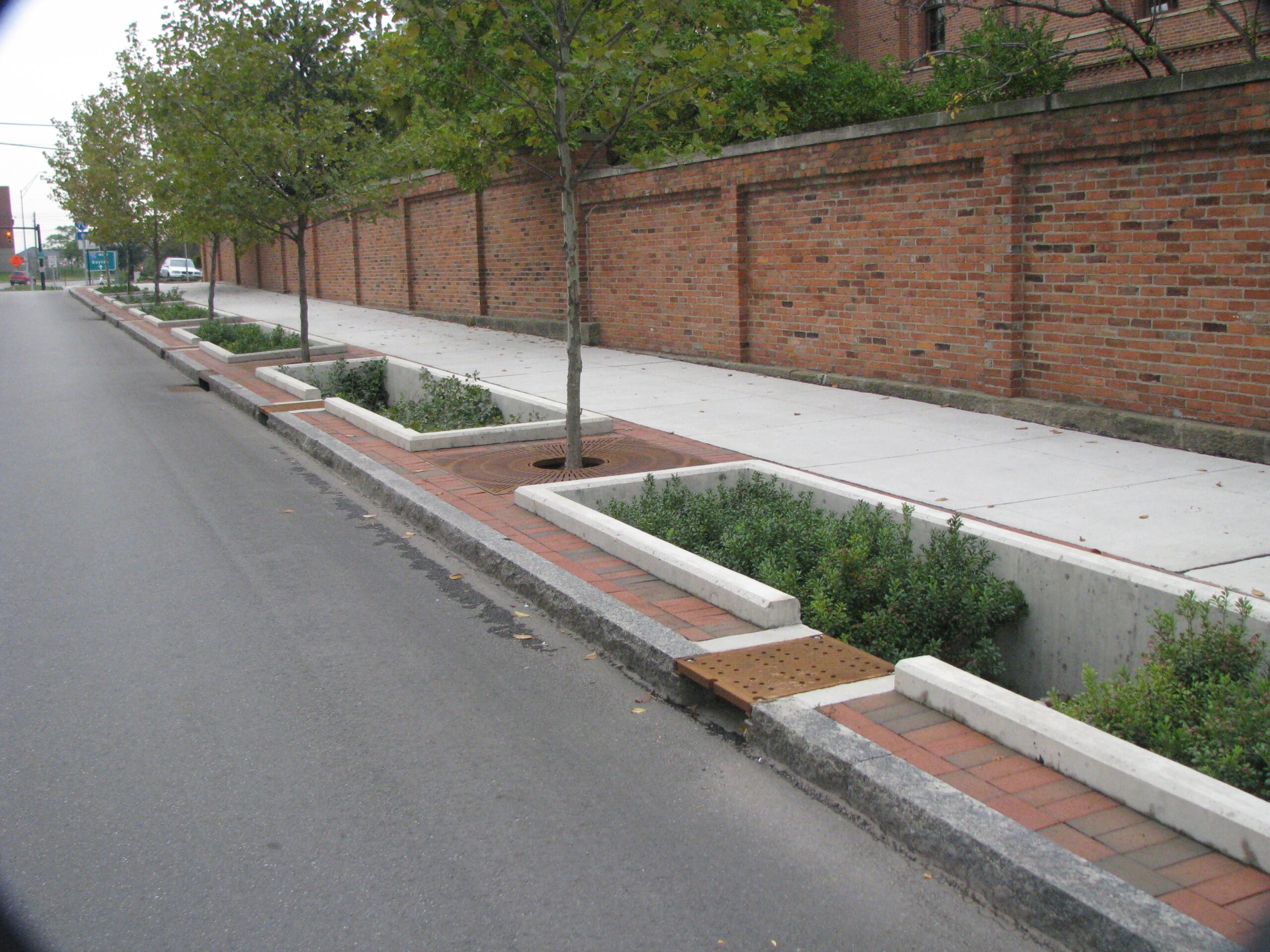Landscaping and Gardening
Landscaping and garden maintenance activities can be major contributors to ocean pollution. Soils, yard wastes, overwatering, and garden chemicals become part of the urban runoff mix that winds its way through streets, gutters and storm drains before entering the ocean. Click here to view Best Management Practices for Gardeners, Homeowners, and Landscapers.
Landscaping for Bioretention
Bioretention, or the use of plants and soil to infiltrate, slow and clean stormwater, is one of the most commonly used structural Low Impact Development stormwater control measures. The selection of appropriate plants for bioretention and other vegetated stormwater facilities is crucial to a successful design. California plant palettes need to be drought-tolerant, appropriate for the regional climate, aesthetically-pleasing, and support stormwater function.
Low Impact Development Initiative (LIDI) has created several bioretention plant design resource documents for California. While primarily focused on the Central Coast region, the plant design approaches and many of the actual plant types are appropriate throughout California.
This information on bioretention was adopted with permission from the Central Coast Low Impact Development Initiative.
Distinguishing Suitable Plants for Ponding Elements vs. Conventional Landscapes
In selecting plants for bioretention or other vegetated stormwater management facilities, it’s important to distinguish between plants that will be located in the functional zone of the facility (Zone A in image below) versus those areas within the bioretention area that do not see greater than average precipitation and soil saturation (Zone B).
In general, only Zone A represents the stormwater functional zone - plants in this zone must be able to tolerate periodic inundation and ponding. Plants around the outer edge typically do not experience ponding or inundation, and they can come from a much broader, more typical planting palette appropriate for the climate.

Tree Inclusion in Bioretention Areas
Trees are an important feature in a community and provide multiple benefits, including stormwater management.
The LIDI bioretention plant list does not include trees. Why? Because there remains uncertainty as to which tree species are appropriate for placement in bioretention areas. For example, some trees will survive being planted where stormwater ponding occurs, others tolerate a side-slope location, but some trees may not survive/thrive in either. Careful consideration must be made to meet local municipal requirements and avoid species that generate excessive leaf litter, as it can cover the surface of the area, reduce infiltration, or clog overflows.
Comprehensive designs that integrate trees and stormwater function is possible! Example images can be found to the right.
Bioretention Resources




